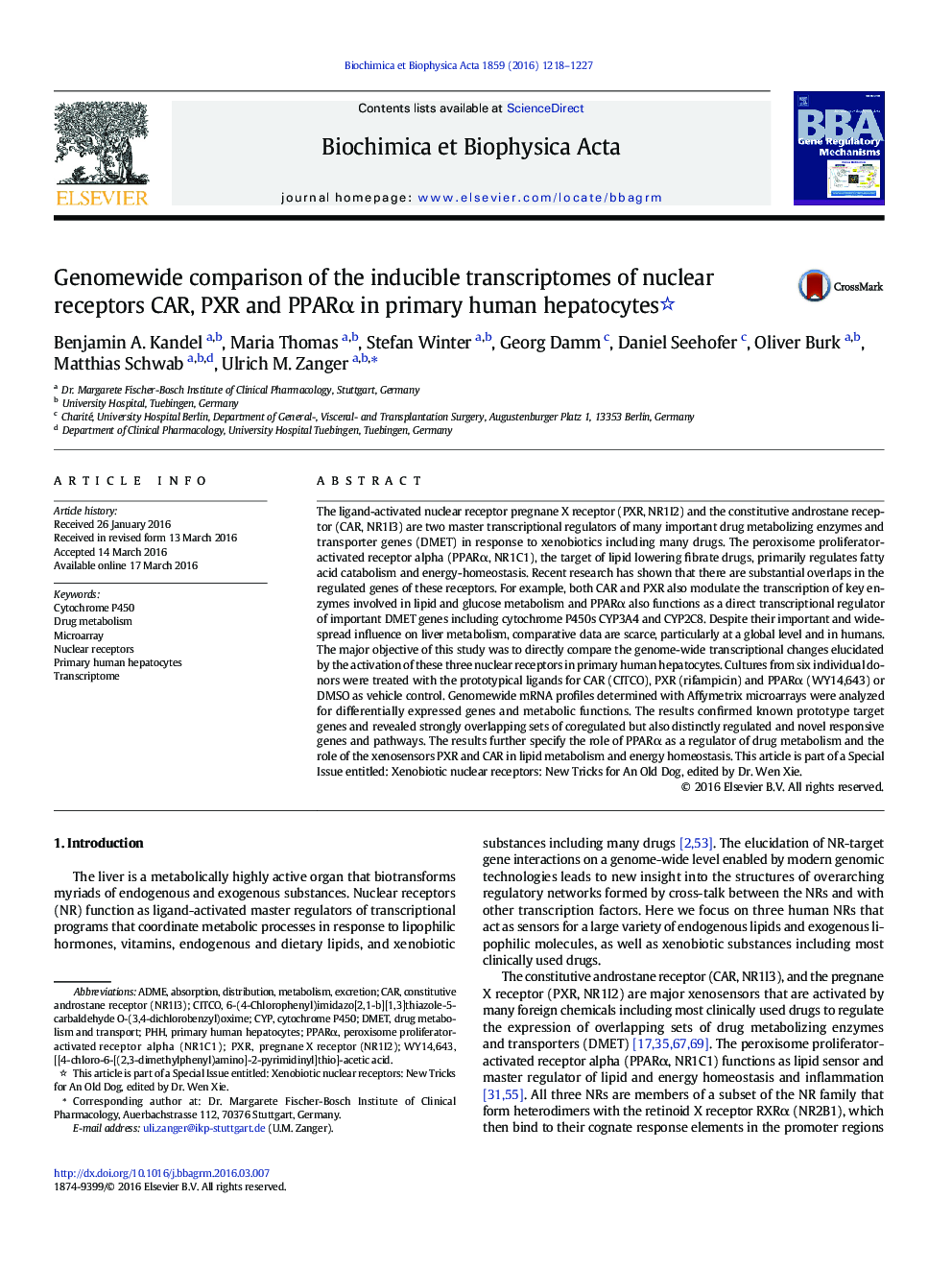| Article ID | Journal | Published Year | Pages | File Type |
|---|---|---|---|---|
| 1946307 | Biochimica et Biophysica Acta (BBA) - Gene Regulatory Mechanisms | 2016 | 10 Pages |
•Microarray analysis of primary human hepatocytes of six donors treated with prototype inducers•Global comparison of induced transcriptomes of CAR (CITCO), PXR (Rifampicin), PPARAα (WY14,643)•Overlapping sets of coregulated and distinctly regulated and novel responsive genes and pathways•Drug metabolism and transport genes coordinately up- or downregulated•Lipid metabolism and energy homeostasis genes counterregulated by PPARα and PXR
The ligand-activated nuclear receptor pregnane X receptor (PXR, NR1I2) and the constitutive androstane receptor (CAR, NR1I3) are two master transcriptional regulators of many important drug metabolizing enzymes and transporter genes (DMET) in response to xenobiotics including many drugs. The peroxisome proliferator-activated receptor alpha (PPARα, NR1C1), the target of lipid lowering fibrate drugs, primarily regulates fatty acid catabolism and energy-homeostasis. Recent research has shown that there are substantial overlaps in the regulated genes of these receptors. For example, both CAR and PXR also modulate the transcription of key enzymes involved in lipid and glucose metabolism and PPARα also functions as a direct transcriptional regulator of important DMET genes including cytochrome P450s CYP3A4 and CYP2C8. Despite their important and widespread influence on liver metabolism, comparative data are scarce, particularly at a global level and in humans. The major objective of this study was to directly compare the genome-wide transcriptional changes elucidated by the activation of these three nuclear receptors in primary human hepatocytes. Cultures from six individual donors were treated with the prototypical ligands for CAR (CITCO), PXR (rifampicin) and PPARα (WY14,643) or DMSO as vehicle control. Genomewide mRNA profiles determined with Affymetrix microarrays were analyzed for differentially expressed genes and metabolic functions. The results confirmed known prototype target genes and revealed strongly overlapping sets of coregulated but also distinctly regulated and novel responsive genes and pathways. The results further specify the role of PPARα as a regulator of drug metabolism and the role of the xenosensors PXR and CAR in lipid metabolism and energy homeostasis. This article is part of a Special Issue entitled: Xenobiotic nuclear receptors: New Tricks for An Old Dog, edited by Dr. Wen Xie.
